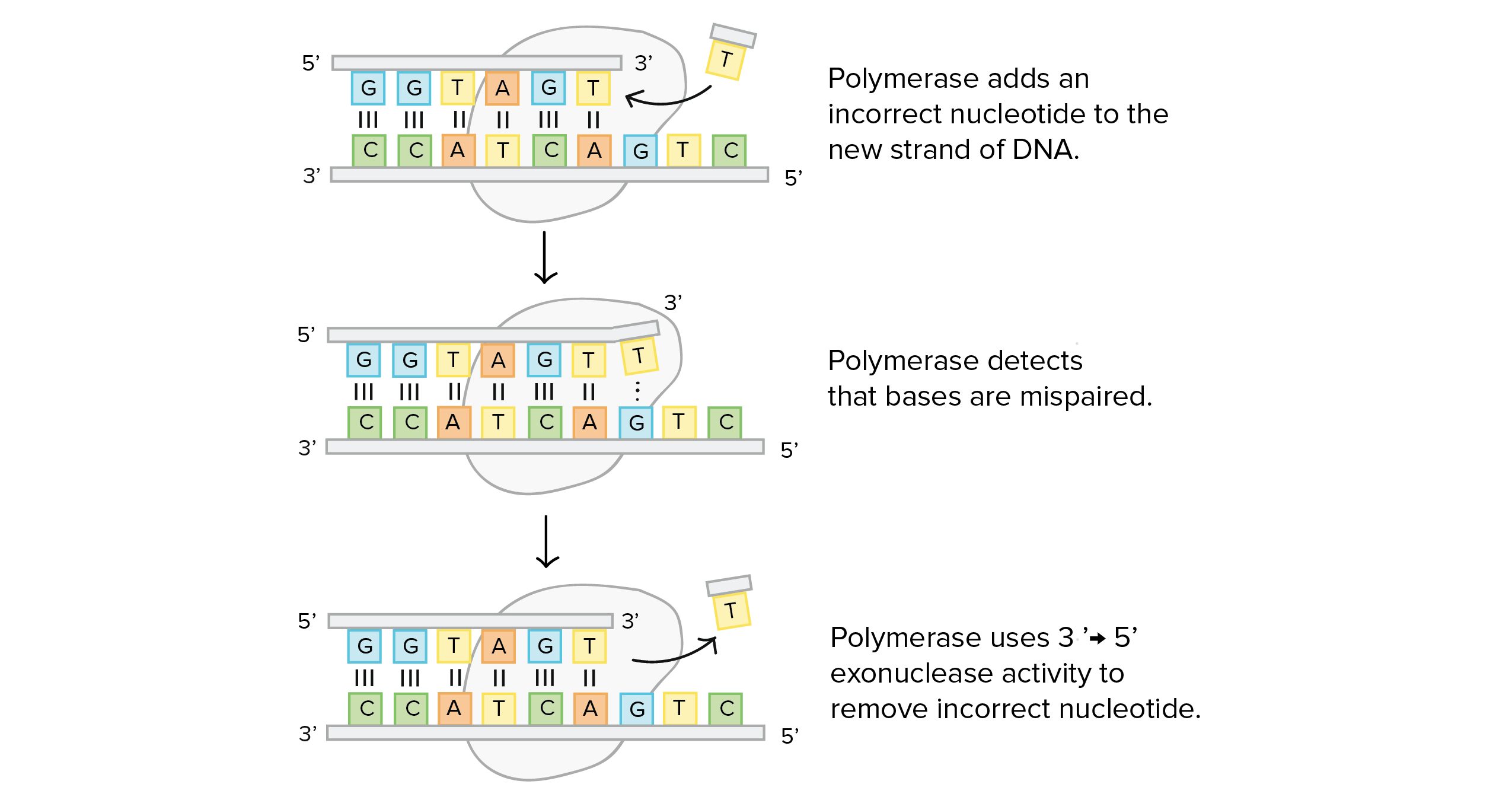We have seen that cells possess a special enzyme to remove uracil from DNA. What do you suppose would happen if the uracil groups were not removed?
DNA polymerases are the enzymes that build DNA in cells. During DNA replication (copying), most DNA polymerases can “check their work” with each base that they add. This process is called proofreading. If the polymerase detects that a wrong (incorrectly paired) nucleotide has been added, it will remove and replace the nucleotide right away, before continuing with DNA synthesis^11start superscript, 1, end superscript.
- Direct reversal: Some DNA-damaging chemical reactions can be directly "undone" by enzymes in the cell.
- Excision repair: Damage to one or a few bases of DNA is often fixed by removal (excision) and replacement of the damaged region. In base excision repair, just the damaged base is removed. In nucleotide excision repair, as in the mismatch repair we saw above, a patch of nucleotides is removed.
- Double-stranded break repair: Two major pathways, non-homologous end joining and homologous recombination, are used to repair double-stranded breaks in DNA (


